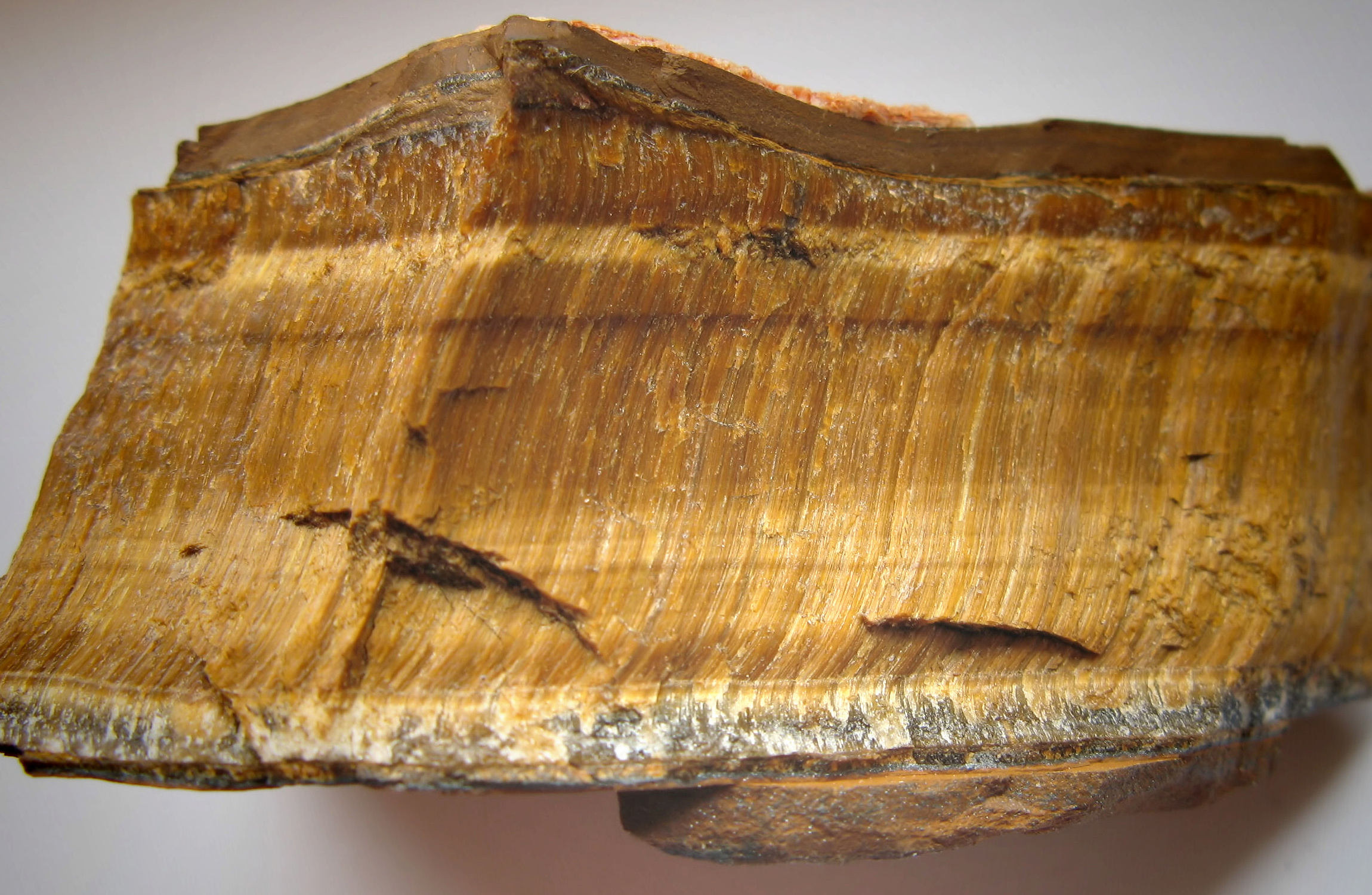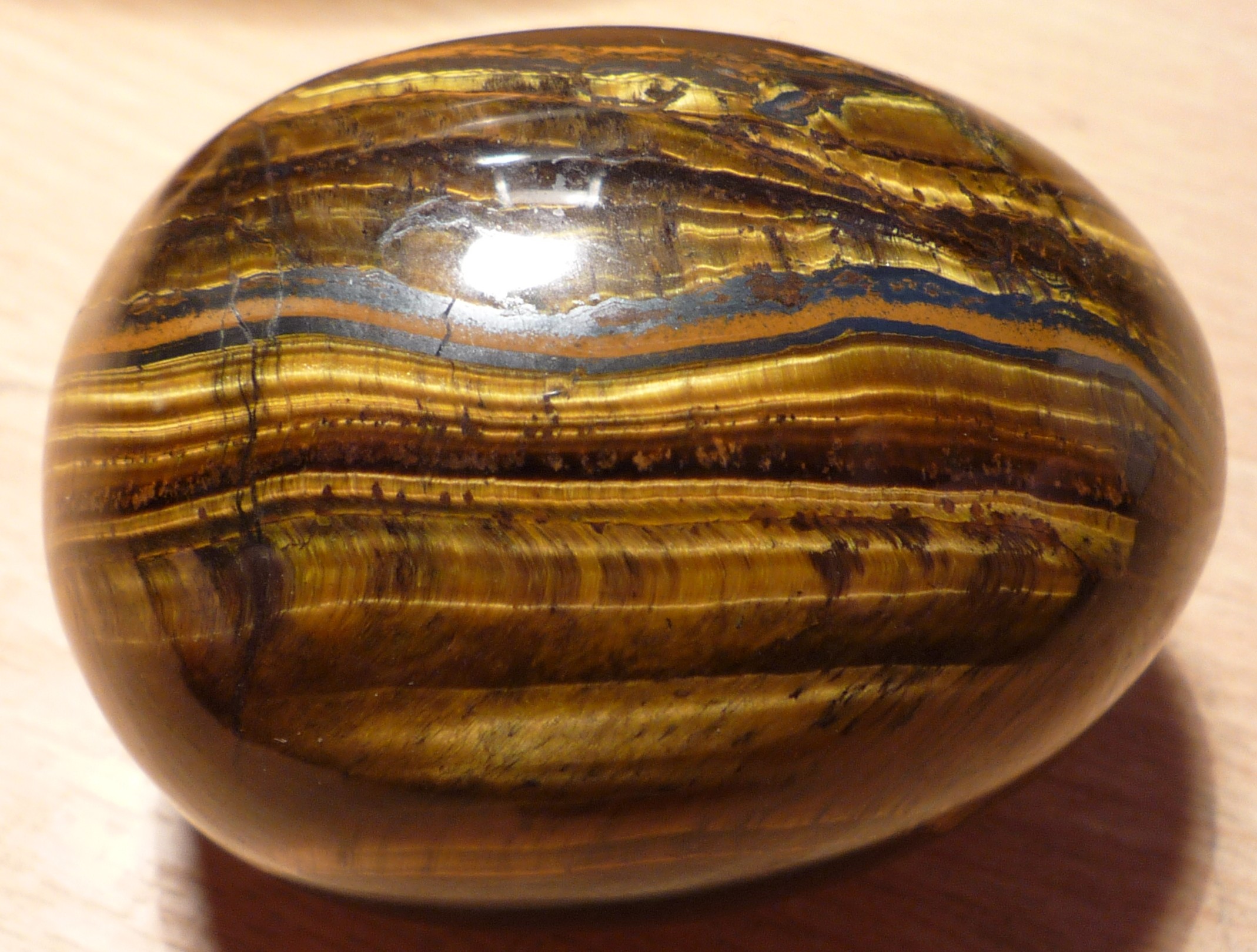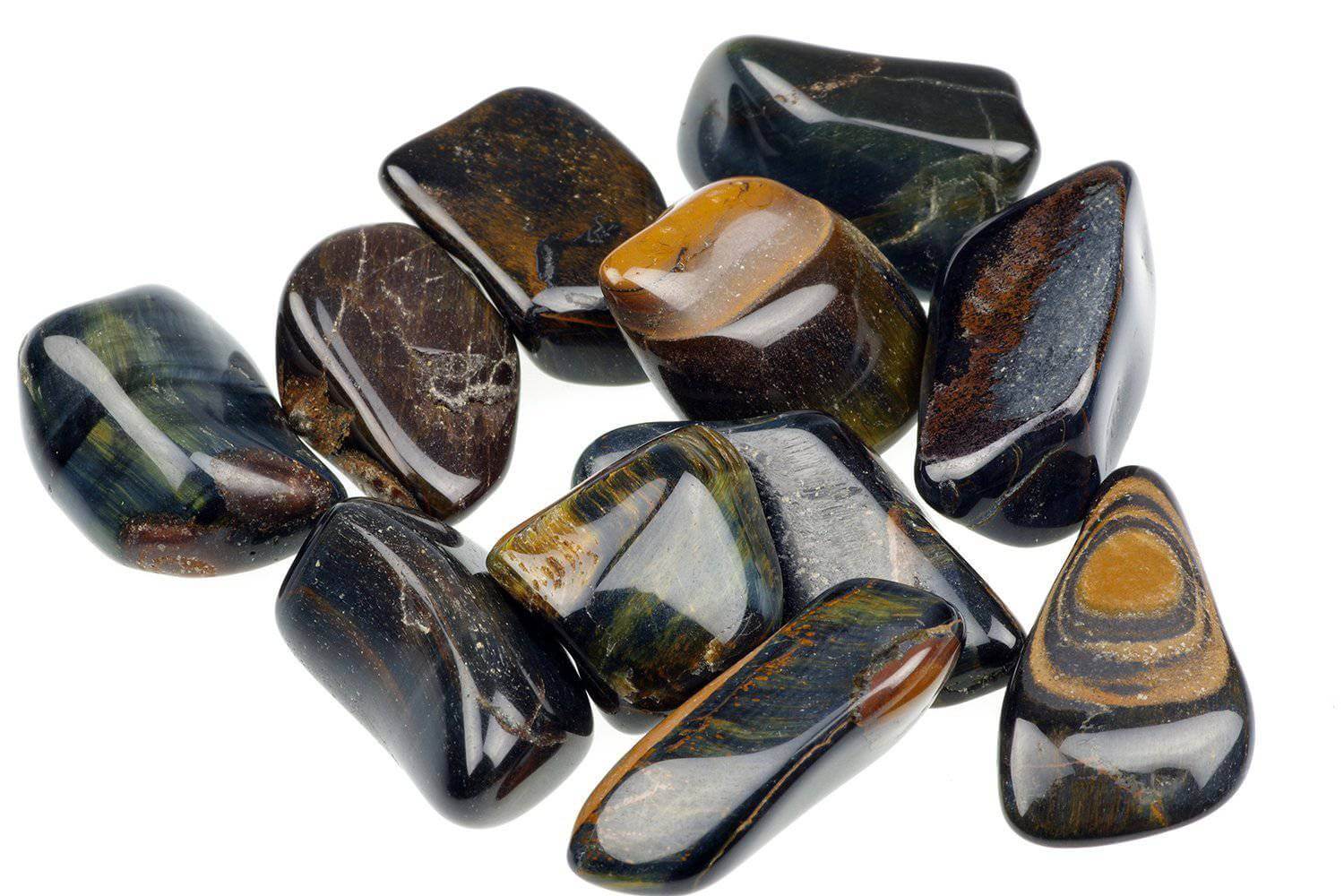Tigers-Eye on:
[Wikipedia]
[Google]
[Amazon]
Tiger's eye (also called tiger eye) is a
chatoyant gemstone that is usually a



 Honey-coloured stones have been used to imitate the more valued cat's eye chrysoberyl, cymophane, but the overall effect is often unconvincing. Artificial
Honey-coloured stones have been used to imitate the more valued cat's eye chrysoberyl, cymophane, but the overall effect is often unconvincing. Artificial
"New interpretation of the origin of tiger's-eye: Comment and Reply"
. {{Silica minerals Quartz gemstones
metamorphic rock
Metamorphic rocks arise from the transformation of existing rock to new types of rock in a process called metamorphism. The original rock ( protolith) is subjected to temperatures greater than and, often, elevated pressure of or more, cau ...
with a golden to red-brown colour and a silky lustre. As members of the quartz
Quartz is a hard, crystalline mineral composed of silica ( silicon dioxide). The atoms are linked in a continuous framework of SiO4 silicon-oxygen tetrahedra, with each oxygen being shared between two tetrahedra, giving an overall chemical ...
group, tiger's eye and the related blue-coloured mineral hawk's eye gain their silky, lustrous appearance from the parallel intergrowth of quartz crystals and altered amphibole
Amphibole () is a group of inosilicate minerals, forming prism or needlelike crystals, composed of double chain tetrahedra, linked at the vertices and generally containing ions of iron and/or magnesium in their structures. Its IMA symbol is ...
fibres that have mostly turned into limonite
Limonite () is an iron ore consisting of a mixture of hydrated iron(III) oxide-hydroxides in varying composition. The generic formula is frequently written as FeO(OH)·H2O, although this is not entirely accurate as the ratio of oxide to hydrox ...
.
Other forms of tiger's eye
''Tiger iron'' is an altered rock composed chiefly of tiger's eye, redjasper
Jasper, an aggregate of microgranular quartz and/or cryptocrystalline chalcedony and other mineral phases,Kostov, R. I. 2010. Review on the mineralogical systematics of jasper and related rocks. – Archaeometry Workshop, 7, 3, 209-213PDF/ref> ...
and black hematite
Hematite (), also spelled as haematite, is a common iron oxide compound with the formula, Fe2O3 and is widely found in rocks and soils. Hematite crystals belong to the rhombohedral lattice system which is designated the alpha polymorph of ...
. The undulating, contrasting bands of colour and lustre make for an attractive motif and it is mainly used for jewellery-making and ornamentation. Tiger iron is a popular ornamental material used in a variety of applications, from beads to knife hilt
The hilt (rarely called a haft or shaft) of a knife, dagger, sword, or bayonet is its handle, consisting of a guard, grip and pommel. The guard may contain a crossguard or quillons. A tassel or sword knot may be attached to the guard or pomme ...
s.
Tiger iron is mined primarily in South Africa and Western Australia. Tiger's eye is composed chiefly of silicon dioxide
Silicon dioxide, also known as silica, is an oxide of silicon with the chemical formula , most commonly found in nature as quartz and in various living organisms. In many parts of the world, silica is the major constituent of sand. Silica is one ...
() and is coloured mainly by iron oxide. The specific gravity
Relative density, or specific gravity, is the ratio of the density (mass of a unit volume) of a substance to the density of a given reference material. Specific gravity for liquids is nearly always measured with respect to water (molecule), wa ...
ranges from 2.64 to 2.71. It is formed by the alteration of crocidolite
Riebeckite is a sodium-rich member of the amphibole group of silicate minerals, chemical formula Na2(Fe2+3Fe3+2)Si8O22(OH)2. It forms a solid solution series with magnesioriebeckite. It crystallizes in the monoclinic system, usually as long prisma ...
.
Serpentine
Serpentine may refer to:
Shapes
* Serpentine shape, a shape resembling a serpent
* Serpentine curve, a mathematical curve
* Serpentine, a type of riding figure
Science and nature
* Serpentine subgroup, a group of minerals
* Serpentinite, a ...
deposits in the US states of Arizona and California can have chatoyant bands of chrysotile
Chrysotile or white asbestos is the most commonly encountered form of asbestos, accounting for approximately 95% of the asbestos in the United States Occupational Safety and Health Administration, U.S. Department of Labor (2007)29 C.F.R.&n ...
, a form of asbestos, fibres. These have been cut and sold as "Arizona tiger-eye" and "California tiger's eye" gemstones. The trade name 'pietersite' is used for a fractured or breccia
Breccia () is a rock composed of large angular broken fragments of minerals or rocks cemented together by a fine-grained matrix.
The word has its origins in the Italian language, in which it means "rubble". A breccia may have a variety of d ...
ted chalcedony
Chalcedony ( , or ) is a cryptocrystalline form of silica, composed of very fine intergrowths of quartz and moganite. These are both silica minerals, but they differ in that quartz has a trigonal crystal structure, while moganite is monocl ...
containing amphibole
Amphibole () is a group of inosilicate minerals, forming prism or needlelike crystals, composed of double chain tetrahedra, linked at the vertices and generally containing ions of iron and/or magnesium in their structures. Its IMA symbol is ...
fibers and promoted as tiger's eye from Namibia and China.

Sources
Common sources of tiger's eye include Australia, Burma, India, Namibia, South Africa, the United States, Brazil, Canada, China, Korea and Spain.
Cultural associations
In some parts of the world, the stone is believed to ward off theevil eye
The Evil Eye ( grc, ὀφθαλμὸς βάσκανος; grc-koi, ὀφθαλμὸς πονηρός; el, (κακό) μάτι; he, עַיִן הָרָע, ; Romanian: ''Deochi''; it, malocchio; es, mal de ojo; pt, mau-olhado, olho gordo; a ...
.
Roman soldiers wore engraved tigers eye to protect them in battle.
Cut, treatment and imitation
Gems are usually given acabochon
A cabochon (; ) is a gemstone that has been shaped and polished, as opposed to faceted. The resulting form is usually a convex (rounded) obverse with a flat reverse. Cabochon was the default method of preparing gemstones before gemstone cut ...
cut to best display their chatoyance
In gemology, chatoyancy ( ), or chatoyance or cat's eye effect, is an optical reflectance effect seen in certain gemstones, woods, and carbon fibre. Coined from the French "œil de chat", meaning "cat's eye", chatoyancy arises either from the ...
. Red stones are developed by gentle heat treatments. Dark stones are artificially lightened to improve colour using a nitric acid
Nitric acid is the inorganic compound with the formula . It is a highly corrosive mineral acid. The compound is colorless, but older samples tend to be yellow cast due to decomposition into oxides of nitrogen. Most commercially available ni ...
treatment.

 Honey-coloured stones have been used to imitate the more valued cat's eye chrysoberyl, cymophane, but the overall effect is often unconvincing. Artificial
Honey-coloured stones have been used to imitate the more valued cat's eye chrysoberyl, cymophane, but the overall effect is often unconvincing. Artificial fibre optic
An optical fiber, or optical fibre in Commonwealth English, is a flexible, transparent fiber made by drawing glass (silica) or plastic to a diameter slightly thicker than that of a human hair. Optical fibers are used most often as a means ...
glass is a common imitation of tiger's eye, and is produced in a wide range of colours.
References
External links
"New interpretation of the origin of tiger's-eye: Comment and Reply"
. {{Silica minerals Quartz gemstones